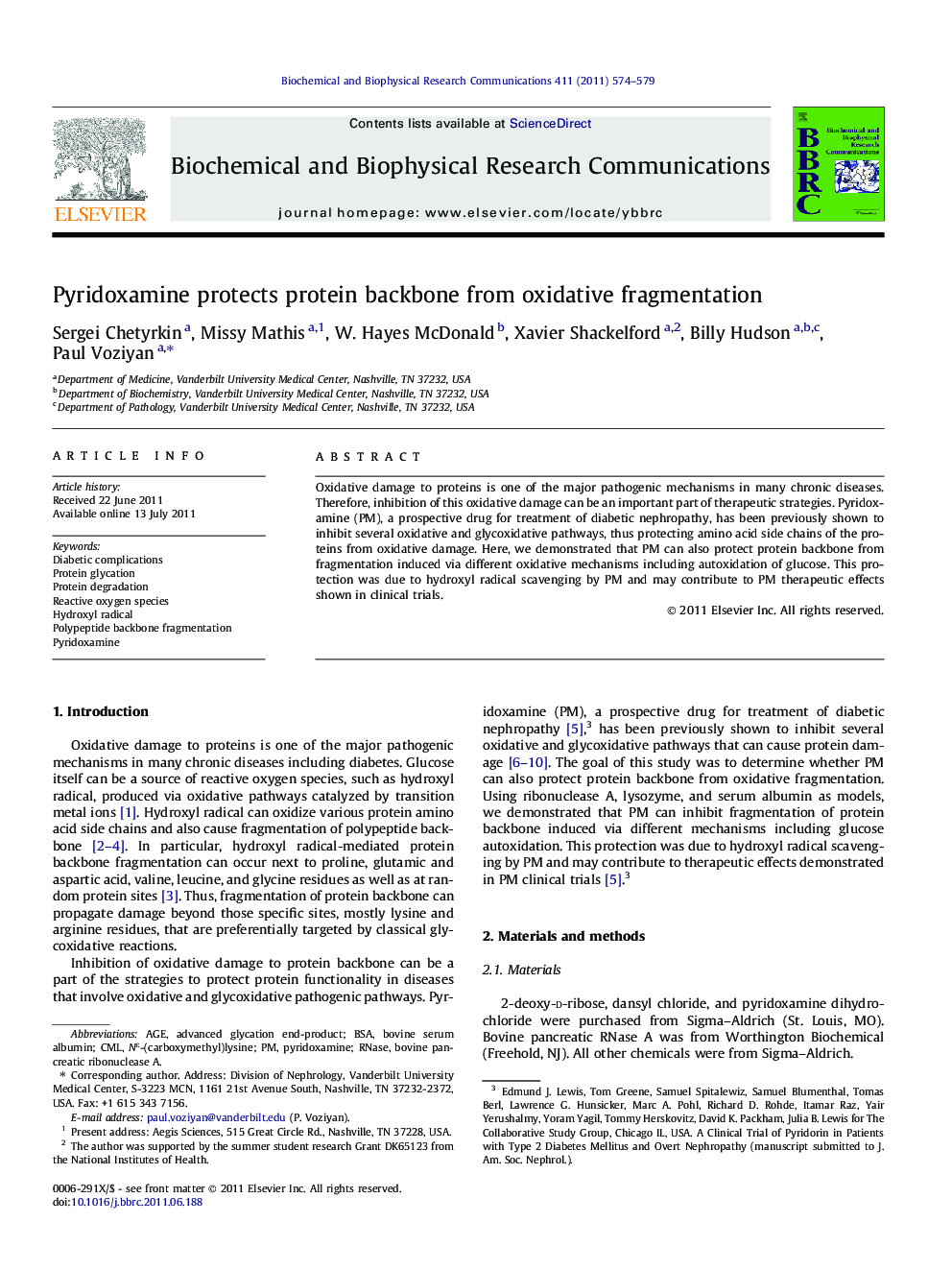| Article ID | Journal | Published Year | Pages | File Type |
|---|---|---|---|---|
| 1930414 | Biochemical and Biophysical Research Communications | 2011 | 6 Pages |
Oxidative damage to proteins is one of the major pathogenic mechanisms in many chronic diseases. Therefore, inhibition of this oxidative damage can be an important part of therapeutic strategies. Pyridoxamine (PM), a prospective drug for treatment of diabetic nephropathy, has been previously shown to inhibit several oxidative and glycoxidative pathways, thus protecting amino acid side chains of the proteins from oxidative damage. Here, we demonstrated that PM can also protect protein backbone from fragmentation induced via different oxidative mechanisms including autoxidation of glucose. This protection was due to hydroxyl radical scavenging by PM and may contribute to PM therapeutic effects shown in clinical trials.
► Autoxidation of glucose can cause fragmentation of protein backbone. ► This mechanism could contribute to protein damage in diabetes and to pathogenesis of diabetic complications. ► Pyridoxamine, a prospective drug for treatment of diabetic nephropathy, can inhibit glucose-induced fragmentation of protein backbone.
